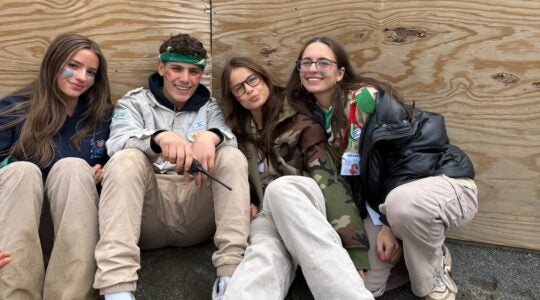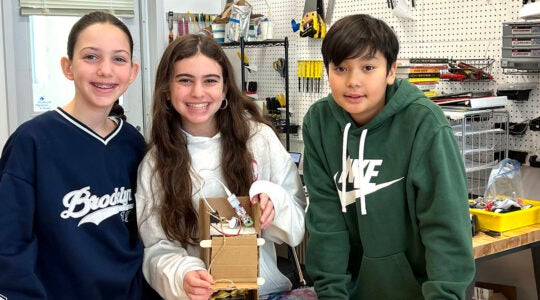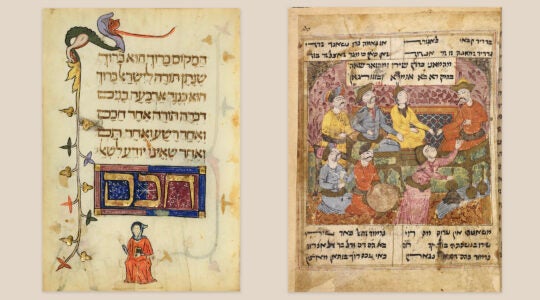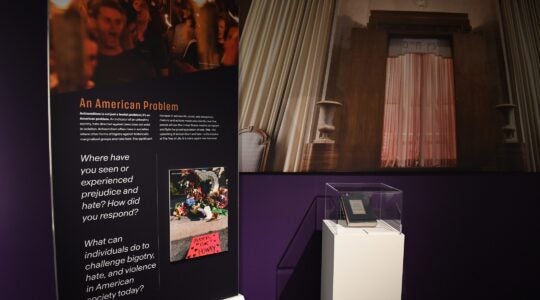When the Stanley I. Chera Sephardic Academy of Manhattan opens its doors for the 2025-2026 school year on Wednesday, there will be 26 kids in its two kindergarten classes.
Administrators call that remarkable considering that only two years ago, there were just nine kindergarten students enrolled in the Orthodox Sephardic Jewish day school on the Upper East Side.
Founded in 2011 as a preschool at 1274 Second Avenue that served 20 students, the SAM School has grown to a full-sized elementary school that will serve 240 students from preschool through 6th grade this year. To cater to the school’s growing population, the school added a kindergarten in 2017, purchased a townhouse on 150 East 74th Street in 2018, and then added a second campus on 96th St. last November, serving grades kindergarten and up.
The school is one of a number of institutions in the neighborhood that in recent years have launched or grown to serve the Sephardic Jewish population. “Right now, it feels like the Upper East Side is really popping up,” said Mijal Bitton, research director of a study by NYU on Sephardi and Mizrahi Jews in the United States. Commissioned by JIMENA, a non-profit that advocates for Jews from the Middle East and North Africa, it was the first-ever national demographic study of its kind. “And you have a combination of institutions, charismatic leaders and other organizations that make it very attractive,” Bitton added.
Upper East Sider Benjamin Rahmani, 5, is one of SAM’s incoming kindergarten students. According to his mother, Linda Rahmani, who grew up in the Syrian Jewish community in Flatbush, Brooklyn, the school provides a bridge for her son between the communal traditions she grew up with and the cultural offerings of Manhattan.
“It’s just a lot of the same Sephardic customs and values that we grew up with and that was the closest thing that we were getting where we live,” said Linda, a fourth-year urology resident at Mount Sinai Hospital. She noted that SAM’s head of school, Rachel Harari, was her English teacher when she was a student at Magen David Yeshivah, a predominantly Syrian Jewish school in Gravesend, Brooklyn.
Linda Rahmani, her husband David and their two young children are an observant, Modern Orthodox family. On the weekends, Shabbat and other holidays, they often visit Linda’s extended family in Brooklyn, or David’s Persian Jewish family in Great Neck, Long Island.
On the Upper East Side, where they live, they’ve found an increasingly prominent Sephardic infrastructure. The Moise Safra Center, a Jewish community center, opened in 2014 and includes a spa, salon, café, daycare facilities and gym. The center expanded in 2018, and added its own synagogue, Ohel Moshe, which describes itself as “an open tent for both Ashkenazim and Sephardim while simultaneously embracing the Syrian Sephardic tradition.”
Ohel Moshe joined at least two other Sephardic prayer communities in the area: the Modern Orthodox Congregation Kehillath Jeshurun has its own Sephardic minyan, or prayer quorum, established in 2011, while the Edmond J. Safra Synagogue, a staple of Manhattan’s Sephardic community, was founded in 2003.
More recently, the Gravesend-based gourmet kosher grocery store, Ouri’s, opened its third location at 1160 Third Ave., near E. 68th St. (Ouri’s also has a store in Deal, New Jersey, where a significant Syrian Jewish population resides.)
According to a 2023 study by the UJA-Federation of New York, 8% of Jews living on the Upper East Side identify as Sephardic or Mizrahi. That number is slightly lower than the percentage of Manhattanites overall, 9%, who identify as Sephardic or Mizrahi.
Bitton connects the perceived growth of the Sephardic community on the Upper East Side to communities expanding in the rest of the tri-state area, particularly across Brooklyn, as well as in Deal and Great Neck.
“A lot of these communities that are thick and strong, I would say, in general, are growing,” Bitton said. “They have more institutions. They are often filled to capacity. And there’s often Ashkenazi institutions that now have more and more Sephardic students. So I would look at the Upper East Side as a story of growth, but it’s a story of growth beyond the Upper East Side.”
SAM’s student body reflects this. “Last year, we were actually quite surprised, because we had a lot of applicants from Brooklyn,” said Harari. “By a lot, I mean, like four or five. And we were shocked, because in Brooklyn, where there is a very large Sephardic, particularly Syrian population — there are many schools in Brooklyn for those families.”
At the SAM School, some of its success may be attributable to interest from outside the Sephardic community. About 40% of its students are Ashkenazi, Harari said.
Nathaniel and Diana Schachter’s 6-year-old son Miro will be starting first grade at SAM this year. The family is of Ashkenazi heritage, and lives on the Lower East Side.
“I’ve got a number of Sephardic friends from that part of the world and that part of the religion, and I’ve always loved their traditions and rituals and songs and kind of ways of doing things, and even though it’s different from what I grew up with, I always was drawn to it and always appreciated it,” Nathaniel Schachter said. “So it’s a little bit kind of going out of your comfort zone — but in a sweet way, in an exciting way.”
“And I’m kind of excited for my boy to get that kind of flavor of the religion,” he added.
According to Elana Riback Rand, a researcher at George Washington University studying Sephardi youth education, part of the Upper East Side’s attraction may stem from young Sephardic families’ desire to gain some distance from their tightly knit communities.
“What I think is probably drawing people to Manhattan a little bit more is this sense of you want to be part of the community, but maybe not fully, fully immersed in the community in the same way,” she said.
While it was Linda’s career that brought the Rahmanis to the Upper East Side, the lifestyle there helps keep them in the neighborhood. “It was hard in the beginning not being able to see my parents as frequently as I wanted to,” Rahmani said. “But now we’re kind of used to it and we like it. We like being a little bit separated from all the chaos of the [insular] social scene. Me and my husband like to do our own type of thing.”
Though her children are young — Benjamin is 5 and her other son is in preschool — she can already see a difference in their growing up in Manhattan.
“The accents, maybe the things they say, the way they play,” Rahmani observed. “But from a Jewish perspective it’s the same — they’re very aware of Hashem and Shabbat.”
The New York Jewish Week brings you the stories behind the headlines, keeping you connected to Jewish life in New York. Help sustain the reporting you trust by donating today.





